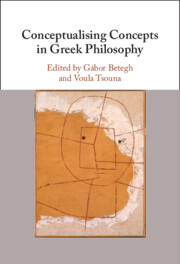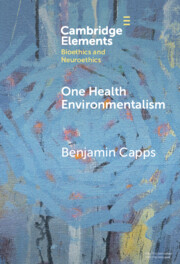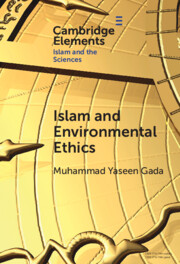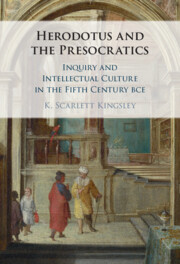259 results
17 - Composition and Ecological Listening
- from Part III - Styles, Conventions, and Issues
-
-
- Book:
- The Cambridge Companion to Composition
- Published online:
- 25 May 2024
- Print publication:
- 30 May 2024, pp 270-284
-
- Chapter
- Export citation
2 - The Logic of Sustainable Development
- from Part I - Mise en Scène
-
- Book:
- Sustainable Development, International Law, and a Turn to African Legal Cosmologies
- Published online:
- 16 May 2024
- Print publication:
- 23 May 2024, pp 49-104
-
- Chapter
- Export citation
Chapter 35 - Goethe and Our Endangered Natural World
- from Part VI - Goethe’s Lasting Significance
-
-
- Book:
- Goethe in Context
- Published online:
- 16 May 2024
- Print publication:
- 23 May 2024, pp 341-349
-
- Chapter
- Export citation
Before Biodiversity: Trajectories of National Parks in Latin America (1930s–1980s)
-
- Journal:
- Latin American Research Review ,
- Published online by Cambridge University Press:
- 03 May 2024, pp. 1-20
-
- Article
-
- You have access
- Open access
- HTML
- Export citation
Chapter 9 - Epicureans on Preconceptions and Other Concepts
-
-
- Book:
- Conceptualising Concepts in Greek Philosophy
- Published online:
- 25 April 2024
- Print publication:
- 02 May 2024, pp 203-236
-
- Chapter
- Export citation
Chapter 15 - Contested Concepts
-
-
- Book:
- Conceptualising Concepts in Greek Philosophy
- Published online:
- 25 April 2024
- Print publication:
- 02 May 2024, pp 345-367
-
- Chapter
- Export citation

Conceptualising Concepts in Greek Philosophy
-
- Published online:
- 25 April 2024
- Print publication:
- 02 May 2024

One Health Environmentalism
-
- Published online:
- 19 April 2024
- Print publication:
- 16 May 2024
-
- Element
- Export citation
Chapter 7 - Super/Natural Solitude
-
- Book:
- Solitude
- Published online:
- 24 March 2024
- Print publication:
- 18 April 2024, pp 131-157
-
- Chapter
- Export citation

Islam and Environmental Ethics
-
- Published online:
- 13 April 2024
- Print publication:
- 09 May 2024
-
- Element
- Export citation
Chapter 5 - Physis on the Battlefield
-
- Book:
- Herodotus and the Presocratics
- Published online:
- 07 March 2024
- Print publication:
- 14 March 2024, pp 141-166
-
- Chapter
- Export citation
9 - Shelley in the Overgrowth
-
-
- Book:
- Percy Shelley for Our Times
- Published online:
- 07 March 2024
- Print publication:
- 14 March 2024, pp 195-213
-
- Chapter
- Export citation
Chapter 25 - Wagner’s Mendacious Humanism: Wagnerian Rhetoric between Nature and the Human
- from IV - Life, Language, and the Ancient World
-
-
- Book:
- Wagner in Context
- Published online:
- 14 March 2024
- Print publication:
- 14 March 2024, pp 249-257
-
- Chapter
- Export citation

Herodotus and the Presocratics
- Inquiry and Intellectual Culture in the Fifth Century BCE
-
- Published online:
- 07 March 2024
- Print publication:
- 14 March 2024
The Metaphysics of Meaning: Aquinas and the Meaning of Life
-
- Journal:
- New Blackfriars ,
- Published online by Cambridge University Press:
- 01 March 2024, pp. 1-15
-
- Article
-
- You have access
- Open access
- HTML
- Export citation
6 - Colonizing Geographies
- from Part III - Making a Slave Society
-
- Book:
- Lucky Valley
- Published online:
- 11 January 2024
- Print publication:
- 22 February 2024, pp 265-312
-
- Chapter
- Export citation
2 - Evaluating New Advances in Alzheimer’s Research
-
- Book:
- Dispatches from the Land of Alzheimer's
- Published online:
- 19 January 2024
- Print publication:
- 22 February 2024, pp 9-11
-
- Chapter
- Export citation
The nature of nurture: Darwinian and mendelian perspectives
-
- Journal:
- Development and Psychopathology , First View
- Published online by Cambridge University Press:
- 13 February 2024, pp. 1-10
-
- Article
-
- You have access
- Open access
- HTML
- Export citation
Chapter 2 - Practical Ethics in Technical Accounts
- from Part I - Moral Themes and Types of Moralism in Galen
-
- Book:
- Medicine and Practical Ethics in Galen
- Published online:
- 14 December 2023
- Print publication:
- 04 January 2024, pp 33-50
-
- Chapter
-
- You have access
- Open access
- HTML
- Export citation
Chapter 3 - Aristotle’s Building Blocks in the Physics
-
- Book:
- Aristotle's Ontology of Artefacts
- Published online:
- 14 December 2023
- Print publication:
- 21 December 2023, pp 75-108
-
- Chapter
- Export citation



